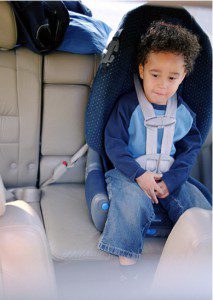With the school year ending soon, hoards of American families will hit the road for a summer getaway. Ensuring that your children, even older children, are properly secured in your vehicle will help ensure that the only annoyances of your car trip will be the never-ending “are we there yet?” question.
According to new findings from the American Academy of Orthopaedic Surgeons, only 46% of parents know that children between the ages of 4 and 6 years old, weighing between 40 and 60 pounds, should travel in a booster seat. In fact, “seat belt syndrome” is particularly dangerous for children aged 4 to 8 who sit in the car with a seat belt only. The seat belt does not hit children in this age range in the proper position, potentially causing hip and abdominal contusions, abdominal injuries, pelvic fractures and spinal injuries.
Some startling and devastating statistics that all parents should be aware of:
- Forty-six percent of fatally injured children younger than age five were completely unrestrained during motor vehicle crashes.
- Ninety seven percent of parents with children up to 3 years of age reported the use of a restraint system compared with only 42 percent of parents with children aged 4 to 6 years.
- Even when safety restraints are used, up to 99 percent of children in certain age groups are not using the recommended restraints.
- Booster seats minimize abdominal injuries that have been associated with the use of seat belts alone in the 4 to 7-year age group.
- Forward-facing car seats reduced serious injury and hospitalization for children aged 1 to 4 years old by 78 to 79 percent compared to seat belts alone.
- The back seat is the right place for children. In the presence of dual airbags, children younger than 10 years of age who were involved in a frontal collision were 34 percent more likely to be killed in the front seat.
Findings and Recommendations
- Rear-facing child seats should be used for children at least until 2 years of age and at least 20 pounds. These seats can be used beyond these guidelines if the child fits comfortably in the seat.
- Forward-facing child seats should be used for children through 4, or until the child weighs more than 40 pounds. They can be used beyond this time if the child still fits comfortably.
- Booster child seats should be used for children aged 5 to 8, or for children weighing 40 to 60 pounds. These can reduce or eliminate injuries from seat belt position in case of a collision.
- Children should always ride in the back seat, especially when dual air bags are present.

